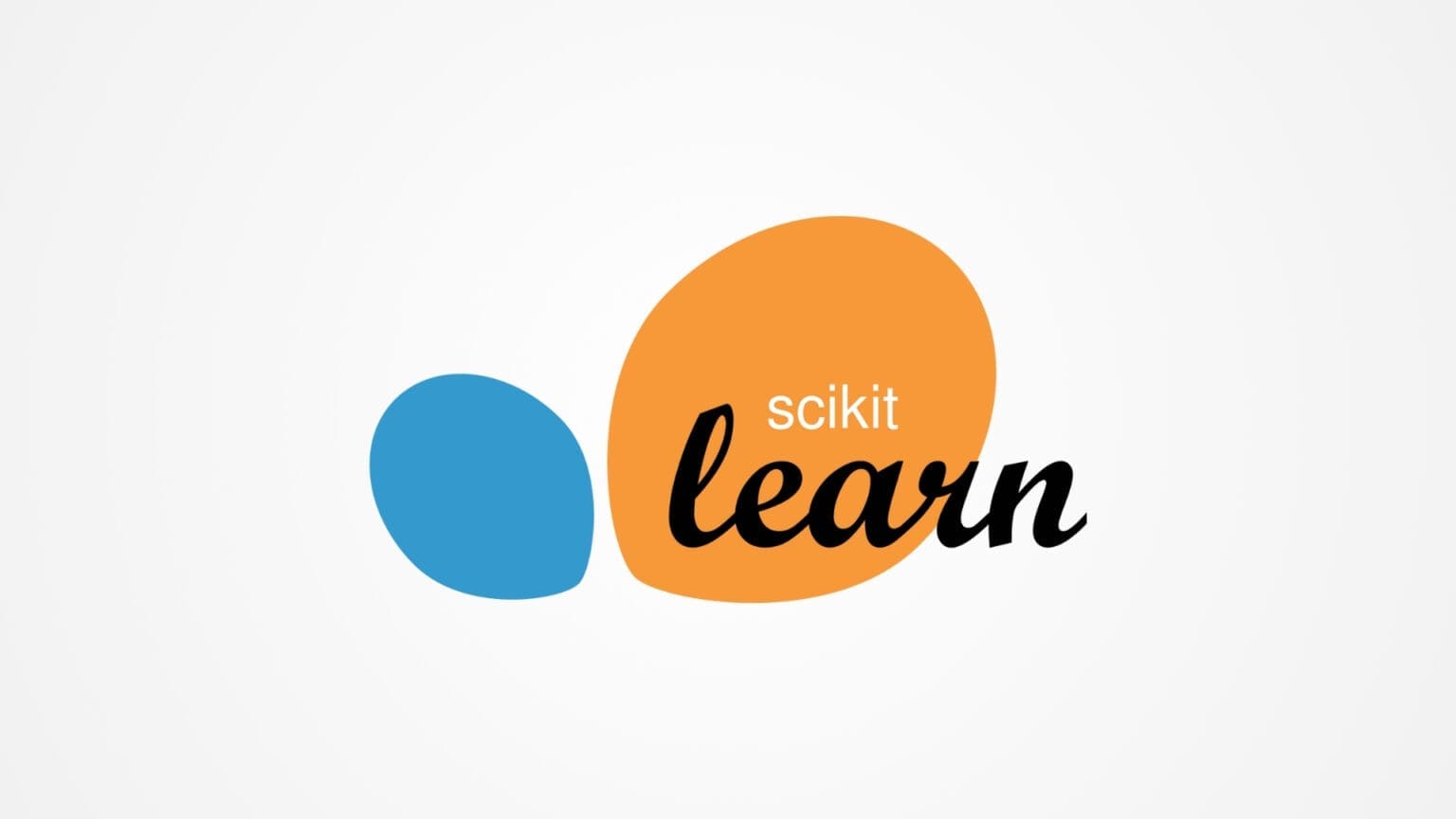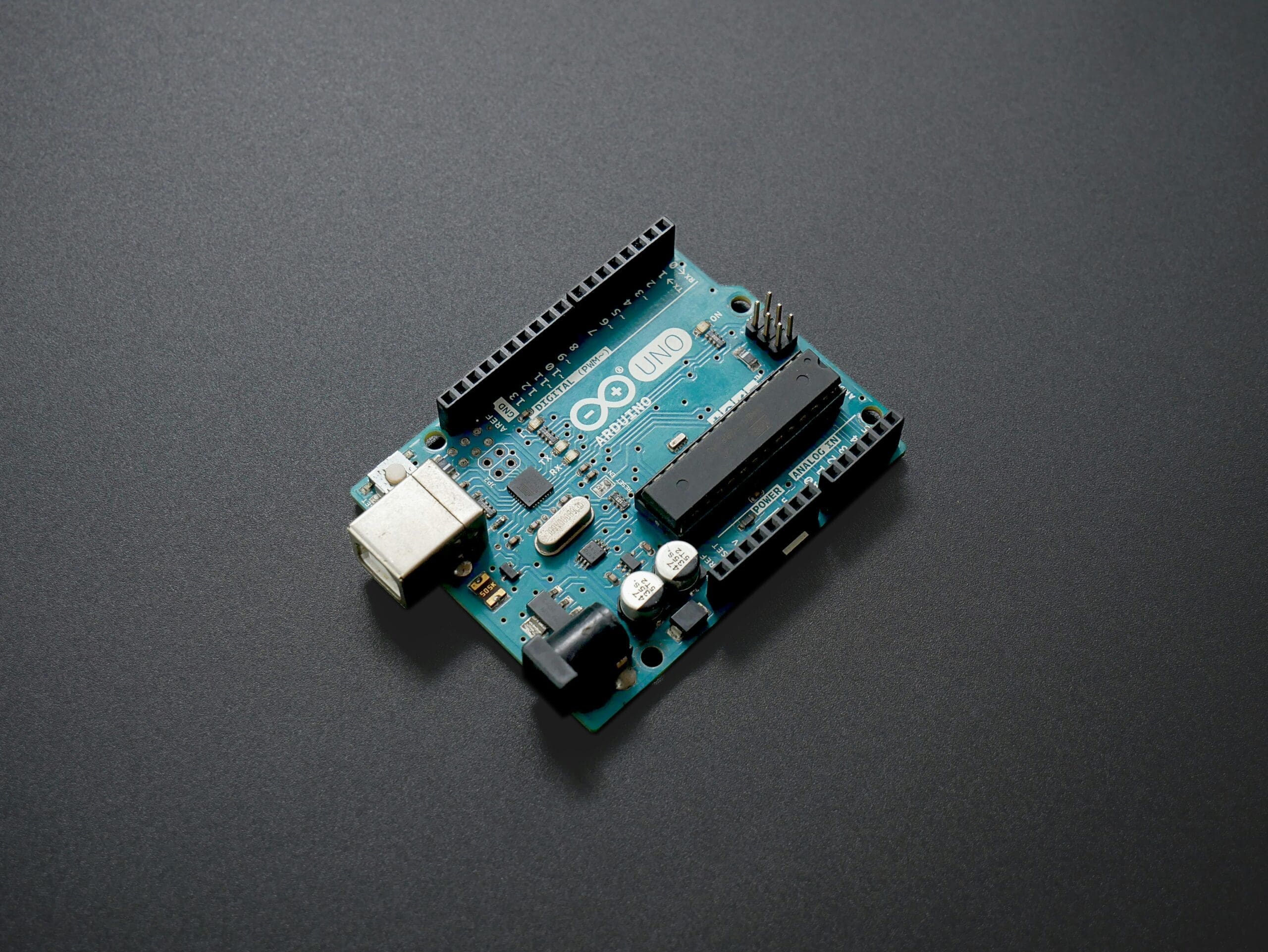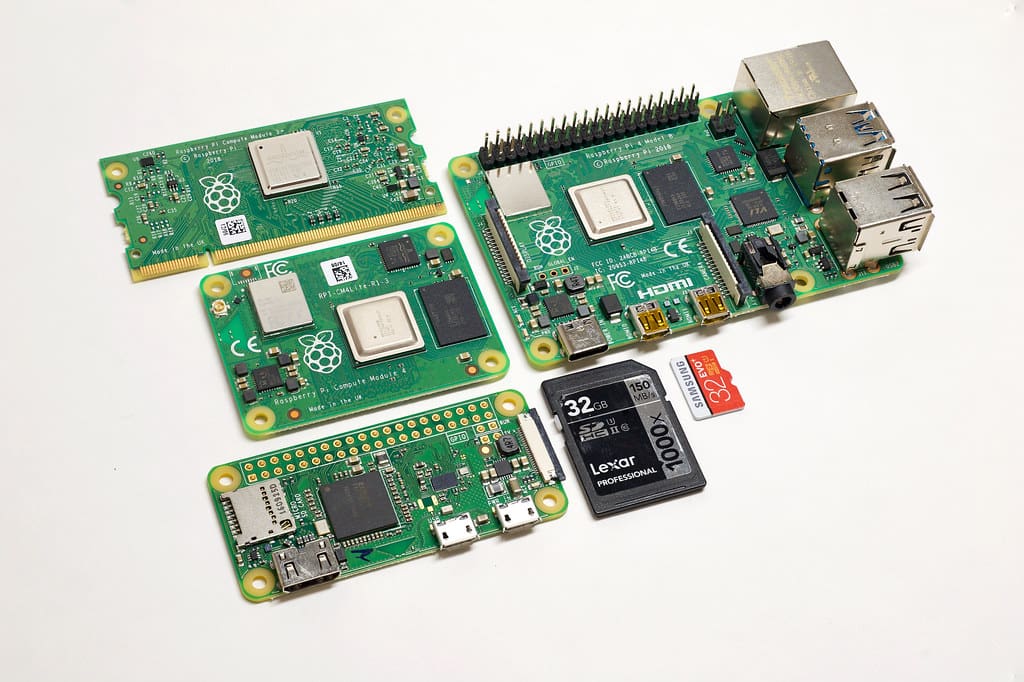Scikit-Learn is one of the most widely used machine learning libraries in Python. Designed to be simple yet powerful, Scikit-Learn provides a broad range of machine learning tools for classification, regression, clustering, model selection, and preprocessing. It’s a go-to library for both beginners and experienced data scientists, offering a rich collection of algorithms and utilities that are easy to implement and customize.
Scikit-Learn is built on top of other foundational Python libraries, including NumPy, SciPy, and Matplotlib. This integration gives it the advantage of efficient data handling, mathematical computations, and seamless visualization support. With Scikit-Learn, you can develop models, fine-tune their parameters, and evaluate their performance with just a few lines of code.
Whether you’re building your first model or working on advanced projects, Scikit-Learn offers essential tools and a consistent API to streamline machine learning workflows. This article will guide you through the foundational concepts of Scikit-Learn, key functionalities, and practical examples to help you get started with machine learning.
Key Features of Scikit-Learn
Scikit-Learn provides a comprehensive suite of tools for every stage of the machine learning pipeline, from data preprocessing to model selection. Let’s explore some of its key features.
1. Data Preprocessing and Transformation
Preparing data is a critical step in any machine learning project. Scikit-Learn offers a range of preprocessing tools to clean, transform, and scale data. These include functions to handle missing values, scale numerical features, encode categorical data, and perform feature selection.
- StandardScaler: Scales features to have a mean of 0 and a standard deviation of 1, which is crucial for algorithms sensitive to feature scaling, like Support Vector Machines (SVMs) and k-Nearest Neighbors (k-NN).
- OneHotEncoder: Encodes categorical variables as binary vectors, making them compatible with algorithms that require numerical inputs.
- PolynomialFeatures: Generates polynomial and interaction features, allowing for more complex modeling of relationships between variables.
from sklearn.preprocessing import StandardScaler, OneHotEncoder, PolynomialFeatures
import numpy as np
# Example: Scaling data with StandardScaler
data = np.array([[1.0, 2.0], [2.0, 3.0], [3.0, 4.0]])
scaler = StandardScaler()
scaled_data = scaler.fit_transform(data)
print(scaled_data)2. Supervised Learning Algorithms
Supervised learning algorithms are central to predictive modeling tasks. Scikit-Learn includes a diverse set of classifiers and regressors to solve problems like spam detection, medical diagnosis, and price prediction.
- Classification: For binary or multi-class classification, Scikit-Learn offers algorithms like Logistic Regression, k-Nearest Neighbors (k-NN), Support Vector Machines (SVM), Decision Trees, and Random Forests.
- Regression: For continuous target variables, Scikit-Learn provides algorithms like Linear Regression, Ridge Regression, and Support Vector Regression (SVR).
from sklearn.linear_model import LogisticRegression
# Example: Training a simple logistic regression model
X = np.array([[1, 2], [2, 3], [3, 4], [4, 5]])
y = np.array([0, 1, 0, 1])
model = LogisticRegression()
model.fit(X, y)3. Unsupervised Learning Algorithms
Scikit-Learn also includes powerful tools for unsupervised learning, which can identify patterns in data without labeled outputs. These algorithms are useful for clustering, dimensionality reduction, and anomaly detection.
- Clustering: Algorithms like K-Means, Agglomerative Clustering, and DBSCAN help group similar data points. Clustering is frequently used in customer segmentation, image compression, and anomaly detection.
- Dimensionality Reduction: Techniques like Principal Component Analysis (PCA) and t-Distributed Stochastic Neighbor Embedding (t-SNE) reduce the number of features, making it easier to visualize high-dimensional data and speed up computations.
from sklearn.cluster import KMeans
# Example: Clustering data with K-Means
X = np.array([[1, 2], [2, 3], [3, 4], [8, 8], [9, 10]])
kmeans = KMeans(n_clusters=2)
kmeans.fit(X)
print(kmeans.labels_)4. Model Evaluation and Selection
Scikit-Learn provides tools to evaluate model performance using metrics and cross-validation techniques. Evaluating models ensures that they generalize well to new data and aren’t just memorizing patterns in the training data.
- Cross-Validation:
cross_val_scoreprovides an easy way to evaluate a model’s performance by splitting data into multiple training and testing sets. - Metrics: Scikit-Learn includes a wide range of metrics for both regression and classification, such as accuracy, precision, recall, F1 score, mean squared error, and R-squared. These metrics give insights into the quality of the model’s predictions.
from sklearn.model_selection import cross_val_score
from sklearn.linear_model import LinearRegression
# Example: Cross-validation with linear regression
X = np.array([[1, 2], [2, 3], [3, 4], [4, 5], [5, 6]])
y = np.array([1, 2, 3, 4, 5])
model = LinearRegression()
scores = cross_val_score(model, X, y, cv=3, scoring='r2')
print("Cross-validation R-squared scores:", scores)5. Model Tuning with Grid Search and Randomized Search
Hyperparameter tuning is essential to optimize model performance. Scikit-Learn offers GridSearchCV and RandomizedSearchCV for automated hyperparameter tuning. These tools allow you to explore combinations of hyperparameters and find the best configuration for your model.
- GridSearchCV: Exhaustively tests all combinations of specified hyperparameters to find the optimal values.
- RandomizedSearchCV: Tests a random subset of hyperparameter combinations, offering a faster but less exhaustive search.
from sklearn.model_selection import GridSearchCV
from sklearn.ensemble import RandomForestClassifier
# Example: Hyperparameter tuning with GridSearchCV
param_grid = {'n_estimators': [50, 100, 150], 'max_depth': [2, 4, 6]}
grid_search = GridSearchCV(RandomForestClassifier(), param_grid, cv=3)
grid_search.fit(X, y)
print("Best parameters:", grid_search.best_params_)These features make Scikit-Learn a comprehensive library for building and fine-tuning machine learning models, allowing data scientists to focus on insights rather than code complexity.
Practical Example: Building a Simple Classifier with Scikit-Learn
Let’s walk through a practical example to get hands-on experience with Scikit-Learn. Suppose we have a dataset with information about customers and want to classify them based on their likelihood to make a purchase.
Step 1: Load and Prepare the Data
For this example, we’ll assume that our data includes numerical columns like age, income, and purchase frequency, as well as a target column indicating purchase likelihood (0 for unlikely and 1 for likely). Typically, we would load the dataset from a file or database, but here we’ll simulate it with random data for simplicity.
import numpy as np
import pandas as pd
from sklearn.model_selection import train_test_split
# Sample data
data = {
'age': np.random.randint(18, 65, 100),
'income': np.random.randint(30000, 100000, 100),
'frequency': np.random.randint(1, 20, 100),
'purchase': np.random.choice([0, 1], 100)
}
df = pd.DataFrame(data)
# Split data into features and target
X = df[['age', 'income', 'frequency']]
y = df['purchase']Step 2: Split the Data into Training and Testing Sets
To evaluate our model, we split the dataset into a training set and a testing set.
# Split data (80% train, 20% test)
X_train, X_test, y_train, y_test = train_test_split(X, y, test_size=0.2, random_state=42)Step 3: Train a Classification Model
For this example, let’s use the k-Nearest Neighbors (k-NN) algorithm, a simple but effective classifier, to build our model.
from sklearn.neighbors import KNeighborsClassifier
# Initialize and train k-NN model
knn = KNeighborsClassifier(n_neighbors=5)
knn.fit(X_train, y_train)Step 4: Evaluate the Model
To assess the model’s performance, we’ll use accuracy, a standard metric for classification problems.
from sklearn.metrics import accuracy_score
# Make predictions and evaluate accuracy
y_pred = knn.predict(X_test)
accuracy = accuracy_score(y_test, y_pred)
print("Model accuracy:", accuracy)Step 5: Hyperparameter Tuning with Grid Search
To improve the model, we can use GridSearchCV to find the optimal number of neighbors.
from sklearn.model_selection import GridSearchCV
# Define parameter grid and perform grid search
param_grid = {'n_neighbors': [3, 5, 7, 9]}
grid_search = GridSearchCV(KNeighborsClassifier(), param_grid, cv=5)
grid_search.fit(X_train, y_train)
print("Best parameters:", grid_search.best_params_)
print("Best cross-validation score:", grid_search.best_score_)This example illustrates how easy it is to go from data loading to model building, evaluation, and tuning in Scikit-Learn. With minimal code, we built and optimized a classifier using Scikit-Learn’s comprehensive toolkit.
Advanced Features in Scikit-Learn
Scikit-Learn includes advanced functionalities that enable data scientists to create sophisticated machine learning workflows. Here, we’ll examine some of the most powerful tools that make Scikit-Learn a comprehensive library for machine learning.
1. Pipelines for Efficient Workflow Management
Pipelines in Scikit-Learn allow you to automate the sequence of data transformations and model training. They’re invaluable for building complex workflows, as they streamline processes and reduce the likelihood of data leakage by ensuring consistent data transformations between training and testing datasets.
A pipeline is essentially a series of steps that includes preprocessing, feature selection, and model fitting. With pipelines, you can encapsulate the entire workflow in a single object, making the code more modular, readable, and maintainable.
- Example: Building a pipeline with StandardScaler and LogisticRegression
from sklearn.pipeline import Pipeline
from sklearn.preprocessing import StandardScaler
from sklearn.linear_model import LogisticRegression
# Create a pipeline
pipeline = Pipeline([
('scaler', StandardScaler()),
('classifier', LogisticRegression())
])
# Fit the pipeline
pipeline.fit(X_train, y_train)
# Predict and evaluate
y_pred = pipeline.predict(X_test)By using pipelines, you can also perform hyperparameter tuning across all stages, optimizing both preprocessing and model parameters simultaneously with GridSearchCV or RandomizedSearchCV.
2. Feature Selection and Dimensionality Reduction
High-dimensional datasets often contain irrelevant or redundant features, which can reduce model performance. Scikit-Learn provides feature selection and dimensionality reduction techniques to improve model accuracy and efficiency by focusing on the most significant features.
- SelectKBest: Selects the top k features based on statistical tests.
- Principal Component Analysis (PCA): Reduces dimensionality by transforming features into a set of orthogonal principal components that capture the maximum variance.
from sklearn.feature_selection import SelectKBest, f_classif
from sklearn.decomposition import PCA
# Example of SelectKBest
selector = SelectKBest(score_func=f_classif, k=2)
X_selected = selector.fit_transform(X, y)
# Example of PCA
pca = PCA(n_components=2)
X_pca = pca.fit_transform(X)Feature selection is crucial in reducing overfitting and speeding up computations, especially in large datasets with numerous features.
3. Ensemble Learning Techniques
Ensemble learning combines the predictions of multiple models to create a more robust and accurate final model. Scikit-Learn provides several ensemble methods, including Bagging, Boosting, and Stacking.
- Bagging: Aggregates predictions from several models trained on random subsets of data. The most popular example is Random Forest, which combines multiple decision trees to improve generalization and reduce overfitting.
- Boosting: Sequentially trains models, with each new model correcting errors made by previous ones. Gradient Boosting and AdaBoost are popular boosting algorithms available in Scikit-Learn.
- Stacking: Combines different types of models and uses a meta-learner to learn from the predictions of the base models, potentially improving performance further.
from sklearn.ensemble import RandomForestClassifier, GradientBoostingClassifier
# Example: Training a Random Forest and a Gradient Boosting model
rf_model = RandomForestClassifier(n_estimators=100)
gb_model = GradientBoostingClassifier(n_estimators=100)
# Fit models
rf_model.fit(X_train, y_train)
gb_model.fit(X_train, y_train)Ensemble methods are powerful because they leverage the strengths of multiple models, often leading to better performance and generalization than individual models.
4. Model Evaluation Techniques
Scikit-Learn offers advanced model evaluation techniques that go beyond simple accuracy. Here are a few key methods that help ensure your models generalize well to unseen data:
Cross-Validation (CV): Repeatedly splits the dataset into training and testing sets, providing a more accurate measure of model performance. k-Fold Cross-Validation is one of the most popular CV techniques.
Stratified Cross-Validation: Ensures that each fold in the cross-validation process has a similar distribution of classes, which is especially important for imbalanced datasets.
from sklearn.model_selection import StratifiedKFold, cross_val_score
# Perform stratified k-fold cross-validation
skf = StratifiedKFold(n_splits=5)
scores = cross_val_score(rf_model, X, y, cv=skf)
print("Cross-validation scores:", scores)Confusion Matrix and Classification Report: For classification problems, Scikit-Learn provides tools like confusion_matrix and classification_report, which give insights into how well the model distinguishes between classes.
from sklearn.metrics import confusion_matrix, classification_report
# Evaluate predictions
print(confusion_matrix(y_test, y_pred))
print(classification_report(y_test, y_pred))These evaluation techniques allow you to thoroughly analyze model performance and make improvements based on detailed feedback.
Practical Example: Building an Ensemble Model with Pipelines and Grid Search
To demonstrate these advanced features, let’s build a practical example using pipelines, ensemble learning, and hyperparameter tuning. We’ll classify customers based on their likelihood of purchasing a product, as in our previous example, but with additional preprocessing steps and an ensemble model.
Step 1: Create a Pipeline with Preprocessing and Modeling Steps
We’ll start by creating a pipeline that includes data scaling and a Random Forest classifier.
from sklearn.ensemble import RandomForestClassifier
from sklearn.preprocessing import StandardScaler
from sklearn.pipeline import Pipeline
# Define pipeline
pipeline = Pipeline([
('scaler', StandardScaler()),
('classifier', RandomForestClassifier())
])Step 2: Define a Parameter Grid for Hyperparameter Tuning
Next, we’ll define a parameter grid for GridSearchCV to find the optimal hyperparameters for our Random Forest model. We’ll tune the number of trees (n_estimators) and the maximum depth (max_depth) of each tree.
from sklearn.model_selection import GridSearchCV
# Define parameter grid
param_grid = {
'classifier__n_estimators': [50, 100, 150],
'classifier__max_depth': [4, 6, 8]
}Step 3: Perform Hyperparameter Tuning with GridSearchCV
GridSearchCV will help us find the best combination of hyperparameters.
# Initialize GridSearchCV
grid_search = GridSearchCV(pipeline, param_grid, cv=5, scoring='accuracy')
grid_search.fit(X_train, y_train)
# Output best parameters and score
print("Best parameters:", grid_search.best_params_)
print("Best cross-validation score:", grid_search.best_score_)Step 4: Evaluate the Final Model on the Test Set
After finding the optimal hyperparameters, we evaluate the model’s performance on the test set.
# Use best model to predict test set
best_model = grid_search.best_estimator_
y_pred = best_model.predict(X_test)
# Evaluate the test set performance
print("Test accuracy:", accuracy_score(y_test, y_pred))
print(classification_report(y_test, y_pred))This example shows how pipelines, ensemble learning, and hyperparameter tuning can improve model performance, simplify workflows, and enhance reproducibility.
Model Interpretability with Scikit-Learn
Understanding model decisions is essential, especially in domains like healthcare and finance where model transparency is crucial. Scikit-Learn provides tools that help interpret models and understand feature importance.
1. Feature Importance
For tree-based models like Random Forests and Gradient Boosting, Scikit-Learn provides a feature_importances_ attribute that shows the relative importance of each feature in making predictions.
# Get feature importance
importances = rf_model.feature_importances_
print("Feature Importances:", importances)2. Partial Dependence Plots (PDP)
Partial Dependence Plots show the relationship between a feature and the target variable, helping visualize how individual features affect predictions. PDP is particularly useful for understanding the impact of specific features in non-linear models.
from sklearn.inspection import plot_partial_dependence
# Plot PDP for specific features
plot_partial_dependence(rf_model, X, [0, 1])3. SHAP and LIME for Model Interpretability
While Scikit-Learn doesn’t natively support SHAP (SHapley Additive exPlanations) and LIME (Local Interpretable Model-agnostic Explanations), these external libraries integrate well with Scikit-Learn models. They provide more sophisticated tools for explaining predictions, especially in black-box models.
- SHAP: Helps understand how each feature contributes to individual predictions, often used for complex ensemble and neural network models.
- LIME: Generates explanations for specific predictions by approximating the model locally with interpretable models.
These tools enhance model interpretability, providing insights into why models make certain predictions, which can build trust in model-driven decision-making.
Real-World Case Studies Using Scikit-Learn
Scikit-Learn’s versatility and ease of use make it the backbone of machine learning in a wide variety of fields. Here are a few case studies that demonstrate how Scikit-Learn is applied in real-world scenarios to solve complex data challenges.
1. Predicting Customer Churn in Telecom
In the telecommunications industry, customer retention is crucial. Scikit-Learn has been used extensively in churn prediction projects, helping companies identify customers at risk of leaving by analyzing behavioral data such as usage patterns, payment history, and customer support interactions.
- Process:
- Data Preprocessing: Cleaned data with missing values and transformed categorical variables into numerical format using
OneHotEncoder. - Feature Engineering: Created new features based on customer behavior, such as average call duration and frequency of service complaints.
- Modeling: Used ensemble models like Random Forests and Gradient Boosting to improve predictive accuracy, leveraging Scikit-Learn’s cross-validation and hyperparameter tuning to optimize the models.
- Data Preprocessing: Cleaned data with missing values and transformed categorical variables into numerical format using
- Outcome: By identifying high-risk customers, telecom companies can proactively reach out to them with special offers or personalized services, improving customer retention and reducing churn rates.
from sklearn.ensemble import RandomForestClassifier
from sklearn.metrics import accuracy_score
# Sample data preparation and RandomForest model fitting
rf_model = RandomForestClassifier(n_estimators=100, max_depth=5)
rf_model.fit(X_train, y_train)
y_pred = rf_model.predict(X_test)
print("Churn Prediction Accuracy:", accuracy_score(y_test, y_pred))2. Fraud Detection in Financial Transactions
In the finance industry, identifying fraudulent transactions is essential for minimizing losses. Scikit-Learn’s classification algorithms and robust preprocessing tools make it ideal for fraud detection projects, which often involve analyzing transaction patterns and user behavior.
- Process:
- Data Preparation: Used
StandardScalerto scale numerical features (e.g., transaction amount) and managed imbalanced classes by using Scikit-Learn’s SMOTE (Synthetic Minority Over-sampling Technique) to generate synthetic examples for the minority class. - Modeling: Applied Logistic Regression and Random Forests for initial modeling, with XGBoost (a commonly used boosting algorithm) as a more advanced approach.
- Evaluation: Employed Scikit-Learn’s
classification_reportandroc_auc_scoreto assess model performance, particularly focusing on precision and recall due to the cost associated with false negatives in fraud detection.
- Data Preparation: Used
- Outcome: Financial institutions use Scikit-Learn to build models that effectively detect and flag suspicious transactions, helping them reduce fraud-related losses while maintaining customer trust.
from sklearn.linear_model import LogisticRegression
from sklearn.metrics import roc_auc_score
# Fit logistic regression model and calculate ROC AUC
lr_model = LogisticRegression()
lr_model.fit(X_train, y_train)
y_pred_proba = lr_model.predict_proba(X_test)[:, 1]
print("ROC AUC Score for Fraud Detection:", roc_auc_score(y_test, y_pred_proba))3. Diagnosing Diseases with Medical Data
Machine learning in healthcare can help diagnose diseases based on patient data, including symptoms, test results, and medical history. Scikit-Learn is commonly used in diagnostic models to detect diseases such as diabetes, heart disease, and cancer.
- Process:
- Data Cleaning: Managed missing data, encoded categorical variables, and used StandardScaler to normalize continuous features (e.g., blood pressure, cholesterol levels).
- Model Selection: Tested various classifiers, including k-Nearest Neighbors (k-NN), Support Vector Machines (SVM), and Random Forests, to find the best-performing model.
- Evaluation: Assessed the models using accuracy, precision, and recall, focusing on high recall for early-stage disease detection where false negatives can have serious implications.
- Outcome: Scikit-Learn enables healthcare providers to implement predictive models that support doctors in diagnosing diseases, potentially improving patient outcomes by identifying conditions early.
from sklearn.svm import SVC
from sklearn.metrics import classification_report
# SVM model fitting and evaluation for disease diagnosis
svm_model = SVC(probability=True)
svm_model.fit(X_train, y_train)
y_pred = svm_model.predict(X_test)
print("Classification Report for Disease Diagnosis:\n", classification_report(y_test, y_pred))These case studies show how Scikit-Learn’s flexible and accessible tools are applied to high-impact areas, from customer retention and fraud detection to healthcare, where machine learning can make significant contributions.
Deploying Machine Learning Models with Scikit-Learn
Once a model has been trained and evaluated, deploying it into production is the final step in making it useful for real-world applications. Scikit-Learn models can be deployed in various environments, from web applications to cloud-based services, ensuring that predictions and insights can be accessed by end-users.
1. Exporting Models with Joblib
Scikit-Learn supports Joblib, a fast and efficient library for serializing Python objects. Once you’ve trained a model, you can save it with Joblib, making it easy to reload the model in a different environment or integrate it into an application.
import joblib
# Save the model
joblib.dump(best_model, 'best_model.joblib')
# Load the model
loaded_model = joblib.load('best_model.joblib')2. Deploying with Flask or FastAPI
For web applications, Scikit-Learn models can be deployed using lightweight web frameworks like Flask or FastAPI. These frameworks allow you to create APIs that serve predictions from your model, making it accessible to other applications or users through HTTP requests.
- Example: Deploying a model with Flask
from flask import Flask, request, jsonify
import joblib
# Load the saved model
model = joblib.load("best_model.joblib")
# Initialize Flask app
app = Flask(__name__)
@app.route('/predict', methods=['POST'])
def predict():
data = request.get_json()
prediction = model.predict([data['features']])
return jsonify({'prediction': prediction.tolist()})
if __name__ == '__main__':
app.run(debug=True)With a few lines of code, you can set up a prediction API, making your model accessible via endpoints that can be called by any client capable of sending HTTP requests.
3. Scalable Deployment with Cloud Platforms
For large-scale applications, Scikit-Learn models can be deployed on cloud platforms like AWS SageMaker, Google Cloud AI Platform, and Microsoft Azure Machine Learning. These platforms support model deployment, scalability, and management, making them ideal for handling large volumes of predictions.
Deploying on cloud platforms also provides access to powerful tools for logging, monitoring, and updating models, ensuring that models stay relevant and maintain high performance in production.
Benefits of Using Scikit-Learn for Data Scientists
Scikit-Learn is designed to make machine learning accessible and efficient, catering to both beginner and experienced data scientists. Here are some key benefits:
1. Ease of Use and Consistent API
Scikit-Learn’s intuitive syntax and consistent API make it easy for beginners to learn and apply machine learning. Every model in Scikit-Learn follows the same structure—fit(), predict(), and score()—which means that once you understand one model, you can easily experiment with others.
2. Comprehensive Range of Algorithms and Tools
From linear models to advanced ensemble methods, Scikit-Learn provides a comprehensive collection of algorithms for various machine learning tasks. Its built-in tools for preprocessing, feature engineering, and evaluation metrics allow data scientists to handle end-to-end machine learning workflows without needing multiple libraries.
3. High-Quality Documentation and Community Support
Scikit-Learn’s documentation is detailed and user-friendly, with examples and explanations for every module. Additionally, Scikit-Learn has a vibrant community of contributors and users who share tutorials, solutions, and updates, making it easy to find help and learn best practices.
4. Flexibility and Interoperability
Scikit-Learn integrates seamlessly with other Python libraries, such as Pandas, NumPy, and Matplotlib, creating a smooth data science workflow. It’s also compatible with libraries like TensorFlow and PyTorch, allowing data scientists to combine Scikit-Learn’s simplicity with the advanced capabilities of deep learning frameworks.
5. Scalability for Production
Scikit-Learn’s efficient design makes it suitable for both experimental and production environments. With support for Joblib and cloud platforms, Scikit-Learn models can be deployed at scale, providing real-time predictions and integrating easily into production systems.
By providing a user-friendly, robust, and flexible machine learning library, Scikit-Learn enables data scientists to quickly turn ideas into insights, empowering them to create and deploy impactful machine learning models.
The Power of Scikit-Learn in Machine Learning
Scikit-Learn is a foundational tool in the machine learning toolkit, offering an accessible yet powerful library for building, evaluating, and deploying models. From beginner-friendly workflows to advanced techniques, Scikit-Learn has become the go-to library for data scientists working on a wide range of projects, including predictive analytics, clustering, and anomaly detection.
With comprehensive features like data preprocessing, ensemble learning, hyperparameter tuning, and pipelines, Scikit-Learn streamlines every step of the machine learning workflow. Its intuitive API and extensive documentation make it easy to use, while its interoperability with other Python libraries and scalability for deployment ensure it meets the needs of both small-scale and large-scale projects.
Whether you’re a newcomer exploring machine learning or an experienced practitioner looking to streamline your workflow, mastering Scikit-Learn provides a strong foundation. Its versatility, ease of use, and community support make it a valuable asset for turning raw data into actionable insights, enabling data scientists to drive innovation and impact across industries.








